Ikelite DS230 strobe review
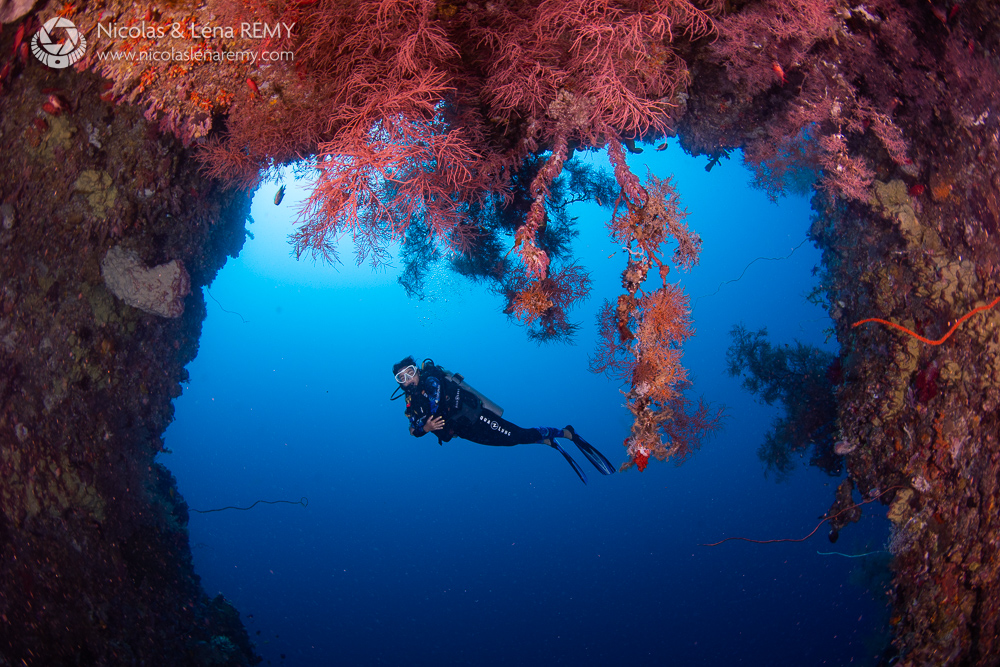
Article written by Nicolas Remy, Photos by Nicolas Remy, unless otherwise credited in captions.
Prelude
When my wife Lena and myself purchased our first underwater photography rig back in 2008, we were already very keen divers and went full-on, getting ourselves an Ikelite DSLR housing (for the venerable Nikon D300) and two Ikelite DS160 strobes.
I really liked these strobes for their bright light beam, fast recycle speed and warm colour temperature. The main reason we moved over to Inon z240s afterwards was that our next housing only supported fiber optics, and at the time, we could only use electrical cables to trigger the Ikelite strobes.
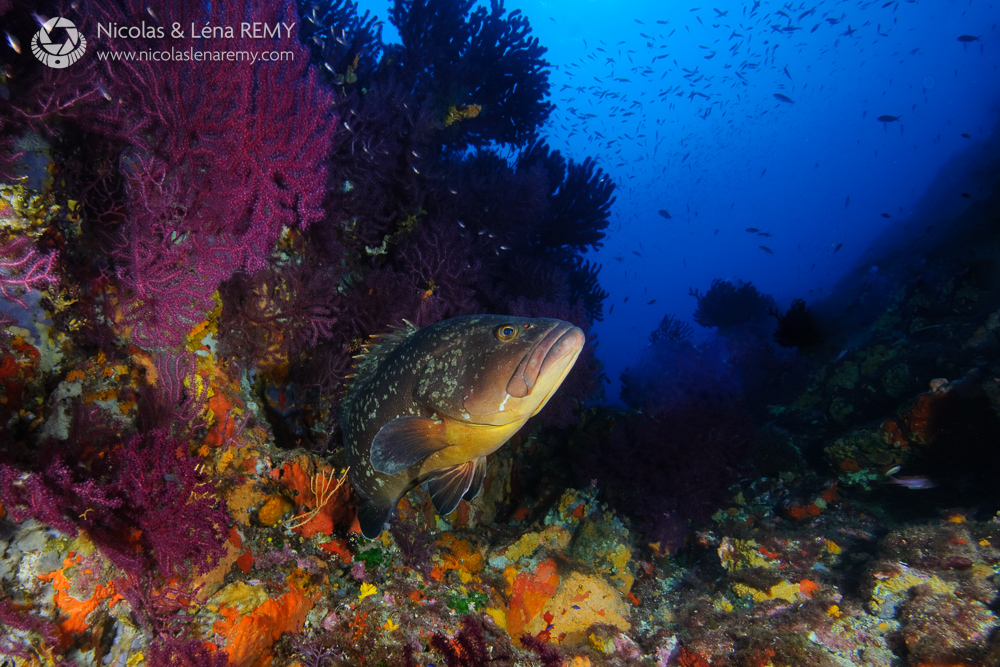
Nikon D300, Nikon 12-24mm, 1/125, F/10, ISO 200, 2x Ikelite DS160.
Needless to say, I got quite interested when Ikelite announced their new flagship DS230 strobes, and very pleased when I won one, as part of the DPG Masters Underwater Imaging Competition 2022.
Coincidentally, I had some action-packed wide-angle work planned in 2023, for which I thought a pair of Ikelite DS230s would be helpful, and I want to thank Ikelite for sending me a second DS230 plus accessories, for the purpose of educating myself on their newest offering, and writing this review.
I am now going to discuss the following aspects of the DS230:
- Strobe Power and Quality of Light
- Recycle speed
- Connectivity and TTL mode
- Size and weight
- Ergonomics and battery life
- Simple maintenance
If you’re unclear on any of these, visit the Photo Equipment course, where I explain the various criteria to consider when choosing underwater photography equipment, in detailed self-paced video lessons.
Strobe power and quality of light
The Ikelite DS230 is one of the most powerful strobes on the market, delivering both a bright and wide light beam, covering a 120 degrees angle (without a diffuser).
But how powerful you may ask? Well in the absence of an industry-standard protocol to compare underwater strobes, it is always difficult to give a straight answer and compare apples-to-apples. (for more details, watch the “Choosing a Strobe” lesson, Photo Equipment course). However, the power consumption is a relevant metric to use when comparing two strobes of the same manufacturer. I certainly considered my Ikelite DS160s to be powerful, wide-angle strobes and they functioned with a 160 Watt-seconds power consumption. In comparison, the new DS230 uses 213 Watt-seconds, a 33% increase which doesn’t account for the years of technological progress and efficiency gains, resulting in a better use of every Watt-seconds. The key take-away is: the new DS230 strobe offers well-over 33% more “oomph” than its already powerful predecessor.

Nikon D500, Tokina 10-17mm, 1/160, F/8, ISO 200. 2x Ikelite DS230 with dome diffusers.
Overall, I found the DS230 strobe to offer excellent quality of light: with a pair of DS230 strobes, I have lit a diversity of wide-angle scenes without visible hot spots, thanks to a smooth light fall-off from the centre of the beam. In terms of colour temperature, I prefer warmer strobes as they make for deeper blues and they give green waters a more cyan tint which I also like. As of November 2023, you can find strobes rated all the way between 4500K and 5800K, making the DS230 one of the warmer strobes with 5000K. Yet, I wish it had retained its predecessor toasty-warm 4800K colour temperature.
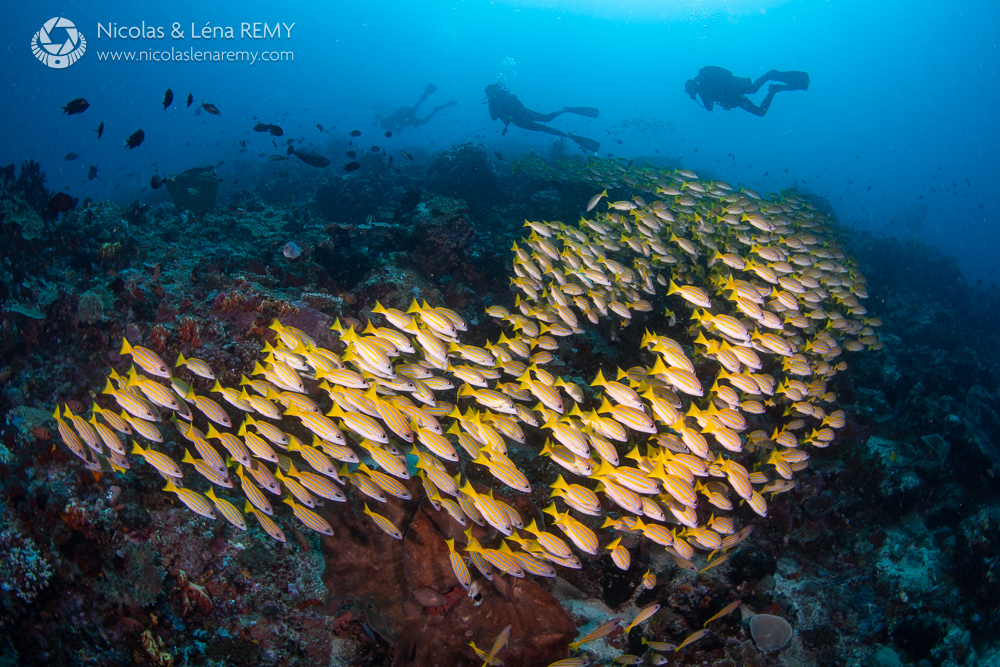
The above observations are based on the 8,000 shots I took with two DS230, 99% of them using the Ikelite dome diffusers. Ikelite suggest that the DS230 really doesn’t need any diffuser, given the smooth light produced by their ring-shaped flash tube, and the native 120 degrees beam angle certainly supports that statement.
Still, the wider & smoother the beam, the better it is for general wide-angle lighting. At a minor cost of 0.5 F-stop loss and given how bright these strobes are, I was happy to make the diffuser trade-off for the vast majority of my photos. For reference, I rarely used the DS230 above 50% power, with the diffusers mounted.
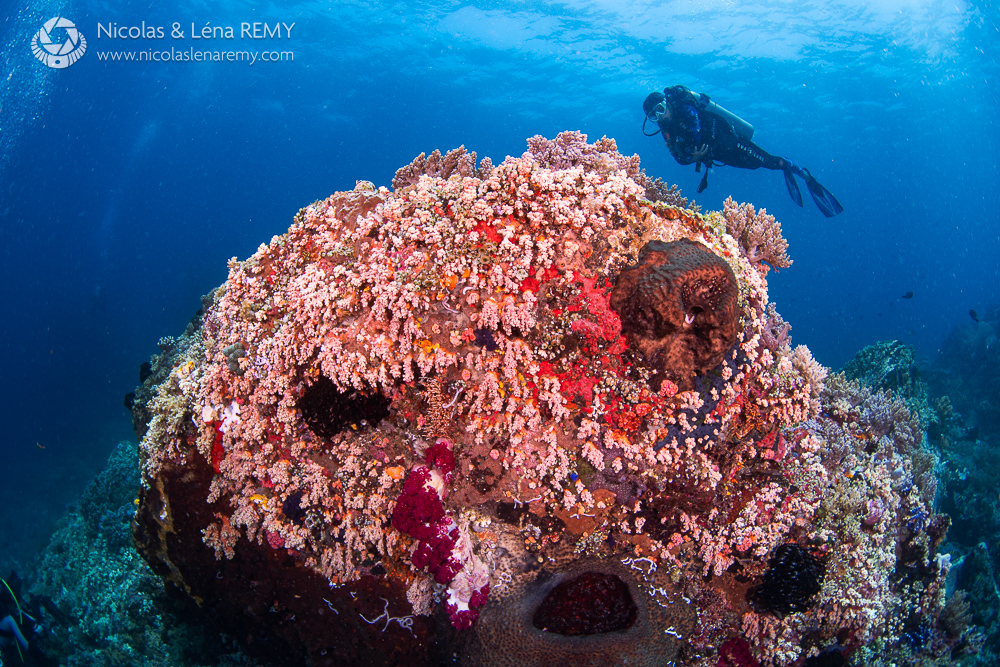
Nikon D500, Tokina 10-17mm, 1/250, F/9, ISO 200. 2x Ikelite DS230 at full power (with dome diffusers attached).
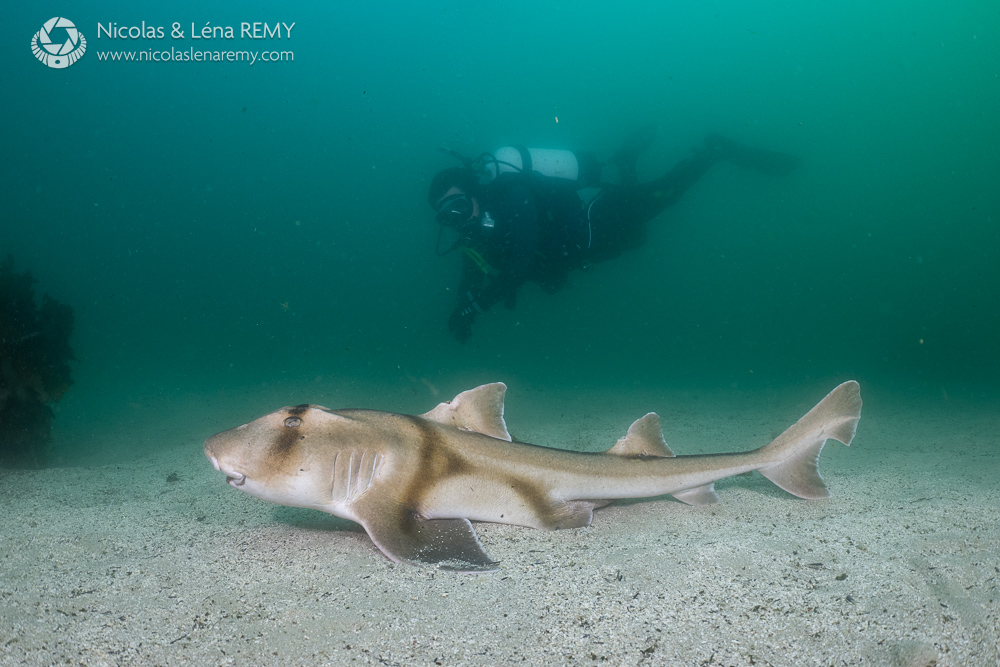
Nikon Z9, Z 24-50mm, WWL-C, 1/60, F/8, ISO 800, 2x Ikelite DS230 with dome diffusers.
For educational purposes, I haven’t removed any backscatter from the above image. A wide beam helps keeping backscatter at bay, provided you know how to position your strobes (check our Lighting course for detailed guidance). The wider the beam the easier the job, which is why I use the Ikelite dome diffusers.
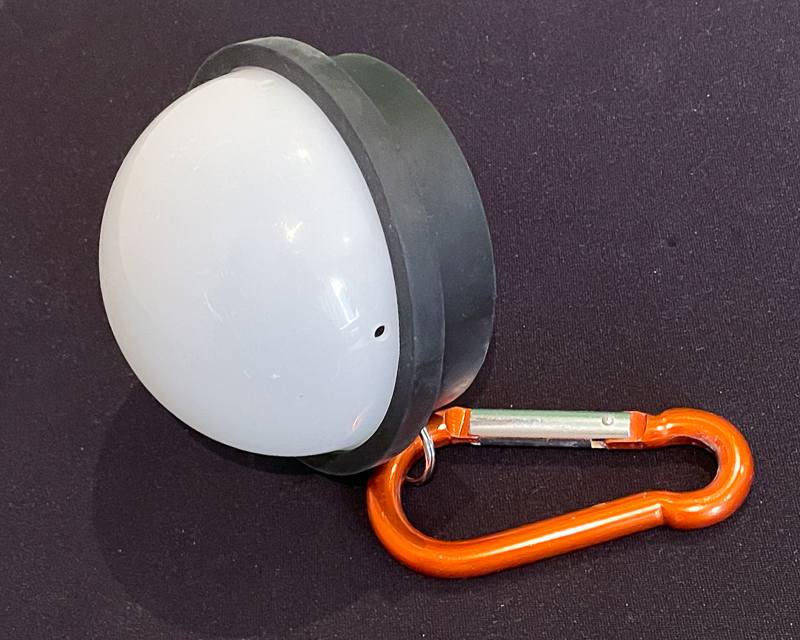
Recycle speed
This was the number one factor which draw me to trying out the DS230: using Ikelite’s proprietary NiMH battery packs, the strobe is meant to sustain an impressive 1.2 second recycle time at full power, and 10 frames-per-seconds at lower powers. What interested me most was the “in-betweens”: how much frames-per-seconds could I shoot with mid-range power settings, which would be bright enough for some wide-angle work? Fur seals are a classic subject that requires both power & fast recycling, so I took the DS230 strobes to dive the seals colony at Montague Island (Narooma, NSW, Australia), with the aim to shoot fast bursts with the Nikon Z9 (detailed review).
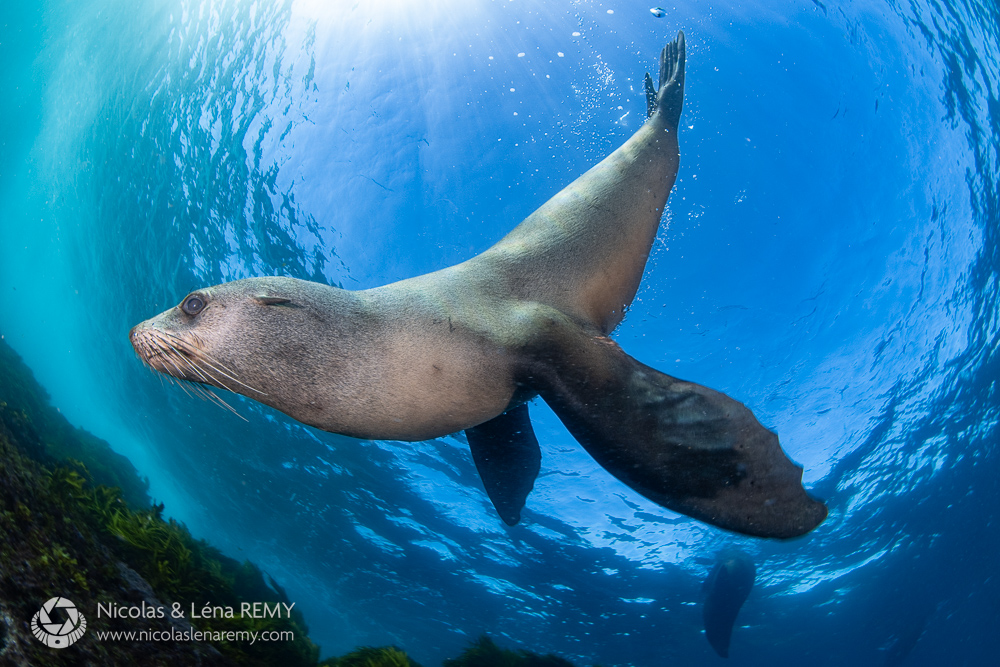
Nikon Z9, Nikon 8-15mm fisheye, 1/200, F/11, ISO 400, 2x Ikelite DS230 with dome diffusers.
I was very pleased with the performance of the strobes in that scenario: at 25% power, I could shoot brief 20 frames-per-second bursts (less than 0.5s long), which helped me capture the perfect moment as a seal was approaching the camera. To be clear, at 20 FPS, the strobes didn’t have time to recycle in between shots and the light output decreased image after image, but the decrease was progressive, and partially compensated by the reduced need for strobe light, as the seal was getting closer. For a subject moving side-ways, I was happier shooting short 10 FPS bursts, at 25% power and below.
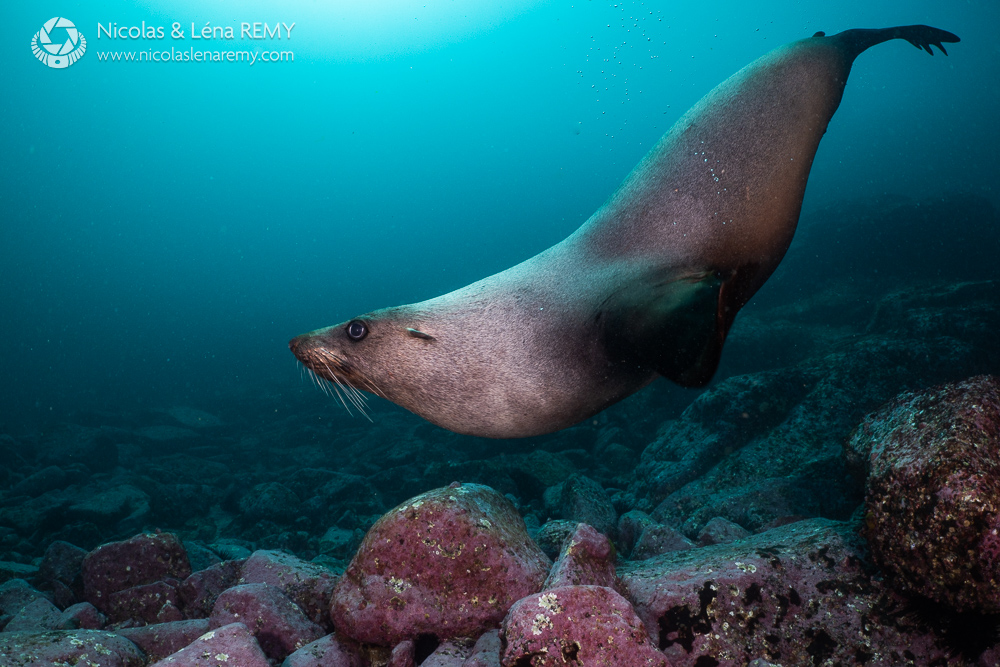
Connectivity and TTL mode
All Ikelite strobes come standard with an electrical connectivity (Ikelite ICS 5-pin bulkhead), but also offer optical converters, allowing use of fibre optic cables, which is how I fired the DS230 strobes.
If you do require an optical converter too, make sure to ask Ikelite or your chosen retailer the model you should get, which depends on your camera / strobe trigger brand. In my scenario and considering I didn’t need TTL support, the recommended converter was #4405.r
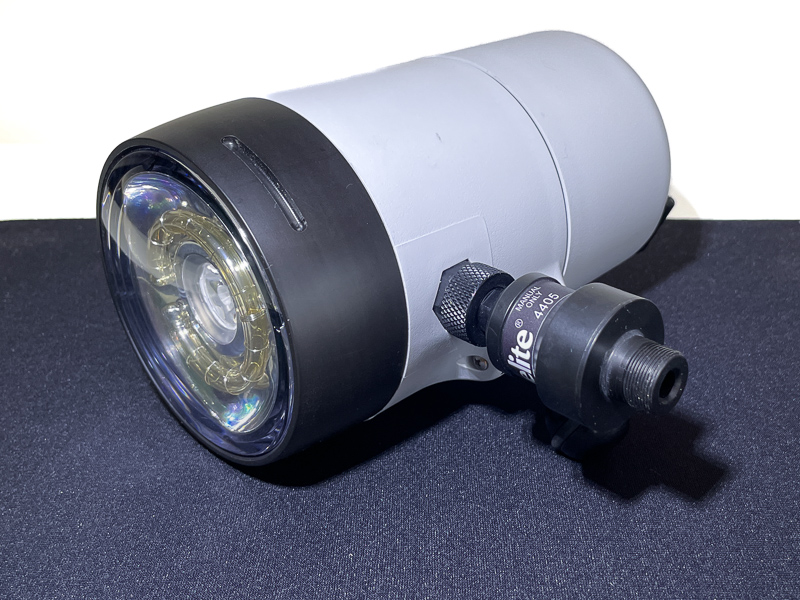
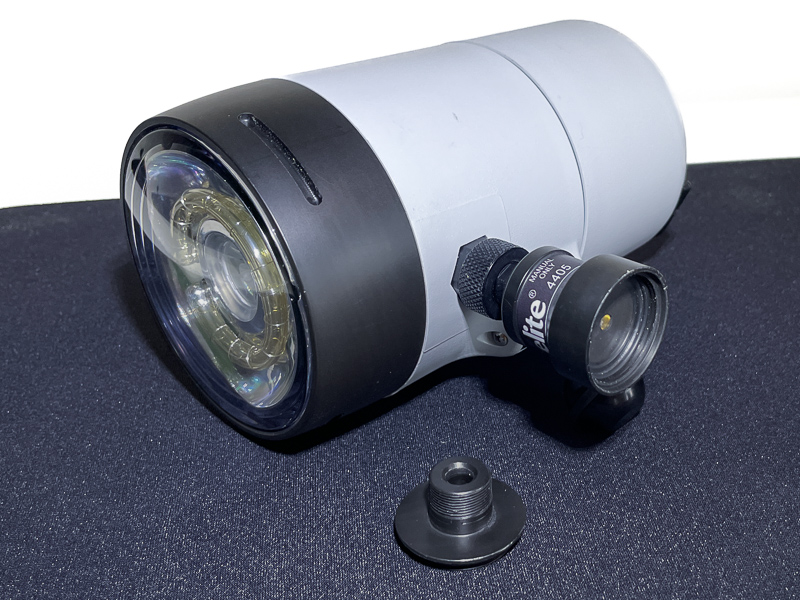
The plastic screw-in cover includes a Sea&Sea fibre optic connector. Take it off (second photo) and the #4405 becomes a highly sensitive remote strobe trigger, especially when combined with Ikelite’s extension cord (1m/3ft and 3m/10ft lengths available).
Given my choice of optical converter, I can’t comment on TTL with the DS230, but exposure accuracy in TTL mode has long been a selling point of Ikelite’s strobes, and I have no doubt it works well with their new flagship strobe. Personally, I prefer controlling the power of my strobes manually, but there are good arguments in favour of TTL too (check the TTL vs Manual lesson, part of our Underwater Lighting Course).
Size and weight
First a good news: Ikelite managed to keep the more powerful DS230 within the same dimensions as the well-known DS160. There is nothing like a free lunch though: powerful wide-angle strobes are big and heavy.
The DS230 is roughly 18cm/7.1in long and 9cm/3.5 wide, weighing 1.3kg/2.9lb , including the battery and optical converter. To put these measurements in perspective, let’s compare with another popular wide-angle strobe, which is my Retra Flash Pro, with its super-charger extension and ballmount attached. The Retra strobe weighs about 1.2kg/2.7lb (batteries included) and has the same length as the DS230 (about 18cm/7.1in), but its diameter is just a little wider at 10cm/3.9in.
In the water, the DS230 was negatively buoyant, but not as much as my Retra Flash Pro, which came as a good surprise.
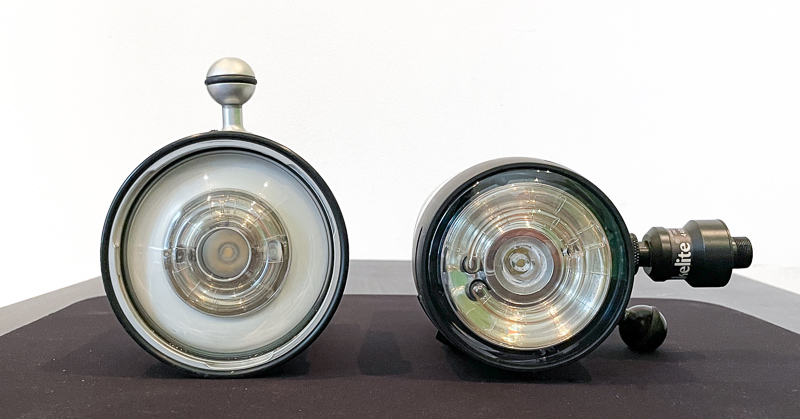
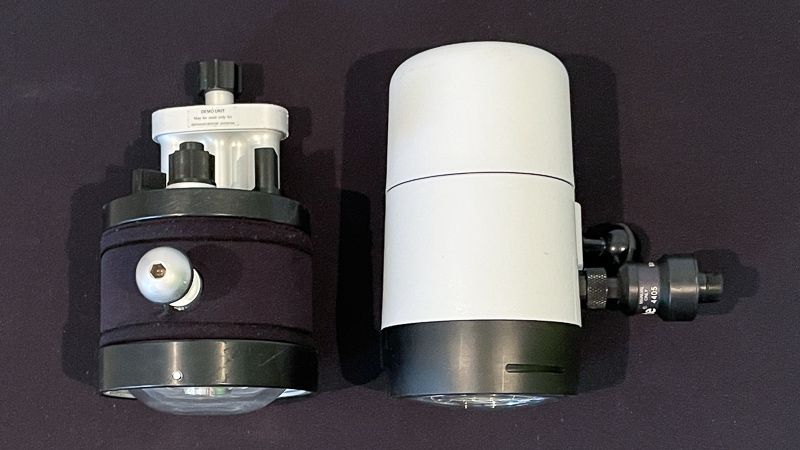
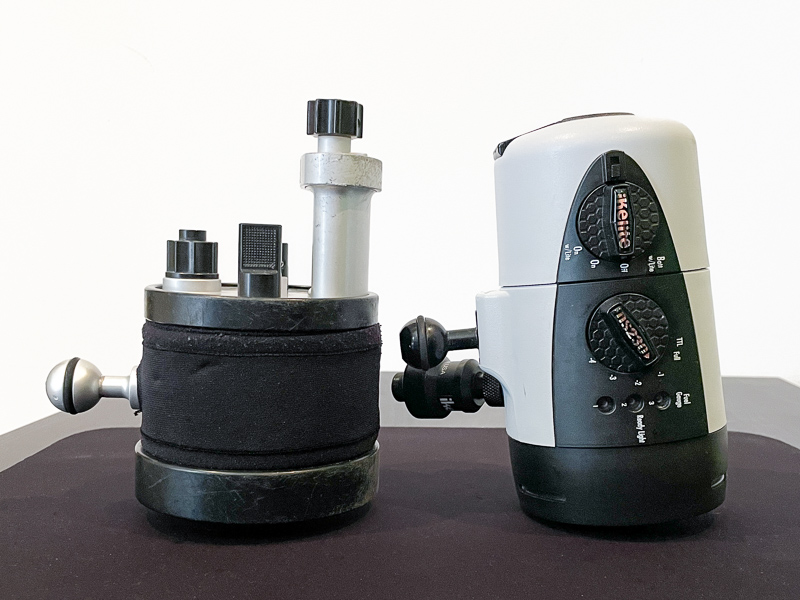
Ergonomics and battery life
I like the straight-forward ergonomics of the Ikelite DS230 strobe. No push-buttons, only the two chunky dials which are easy to grab, even with my dry gloves on, and they “click” in a very responsive manner.
The rear dial, mounted on the battery pack is your ON/OFF switch, which also lets you enable/disable the aiming light and it has a handy “battery test” position. The latter works by firing a couple of low-power flashes to gauge how much juice is left, and gives you a visual feedback thanks to 3 “fuel gauge” lights, in 75-100%, 50-75%, 25-50% and 0-25% chunks. This is a convenient, easy-to-use indicator, with the caveat that I’m finding it goes surprisingly fast to the 50-75% level, whereas it stays at that level quite long.
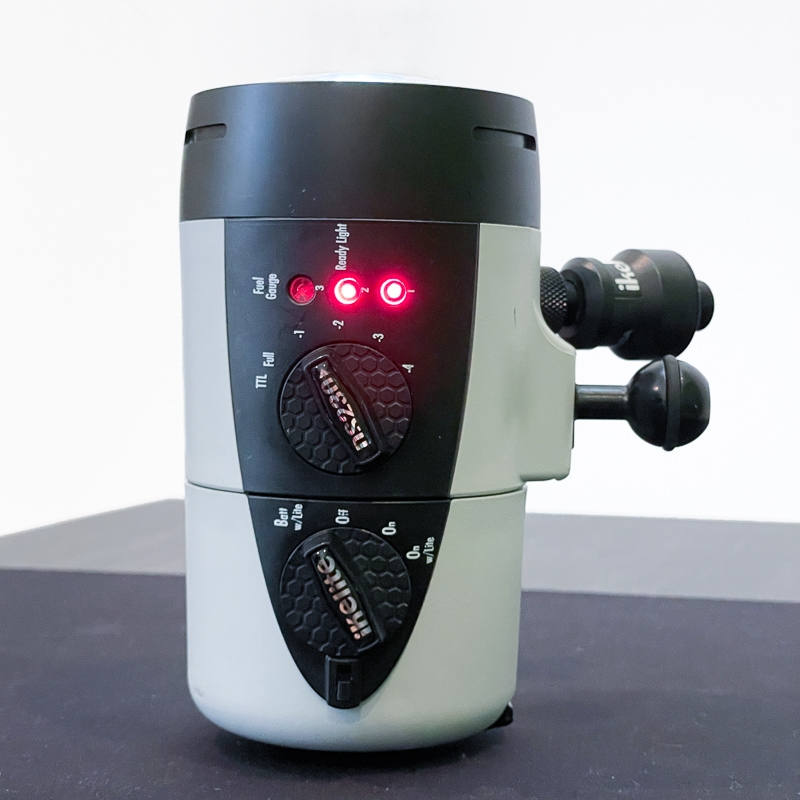
The lock lever is visible at the very bottom, below the lower dial.
The Ikelite DS230 is rated for over 300 full-power flashes, and I am typically at 50% or less for wide-angle, which means a fully charged battery should be good for at least 600 shots. Finally, that battery pack comes with a little “lock” lever, which prevents the strobe from accidently turning ON before the dive or while travelling.
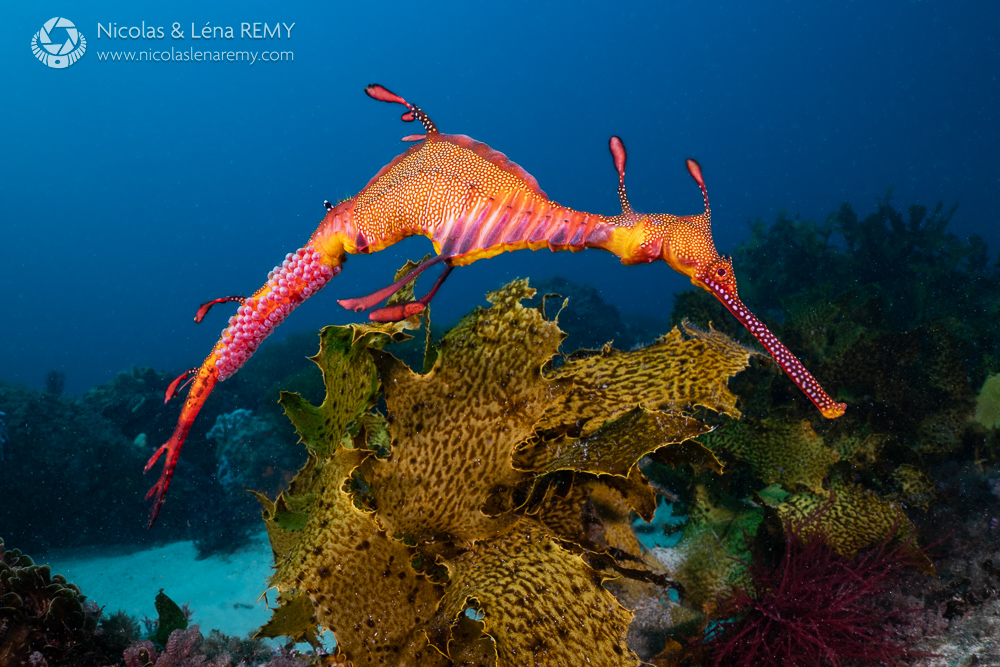
Nikon Z8, Z 24-50mm, WWL-C, 1/100, F/13, ISO 320, 2x Ikelite DS230 with dome diffusers.
The power dial is found on the main strobe body, and offers full manual power control with 10 different settings, ranging from 100% to 4% power, in half-stops increments. Because the clicks of that dial are so easy to feel, I routinely adjust my strobe power without taking my eye away from the camera. Controlling your strobe power manually is easier than it sounds, check our Underwater Camera Settings Course if you’re curious to learn how. If you prefer to use TTL mode, simply flick that dial to the top position (subject to using a compatible housing/TTL circuitry).
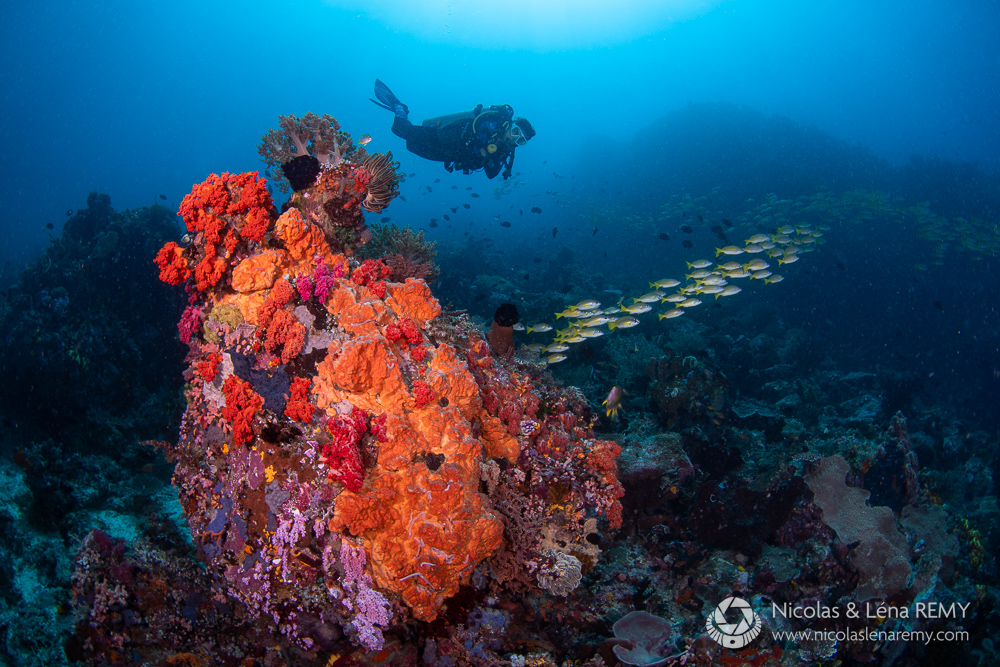
Nikon D500, Tokina 10-17mm, 1/200, F/10, ISO 200. 2x Ikelite DS230 with dome diffusers.
Simple maintenance
It is easy to overlook the maintenance aspects when comparing two strobes’ specifications sheets, but for me this can tilt the balance towards a given strobe, as I put a lot of value in minimising the time spent fiddling around equipment at the surface. This is one of the DS230’s strong points, especially if you’re using fibre optics like I do.
Indeed, the battery pack’s o-ring does not require lubrication. Yes, you read correctly: because it isn’t a moving o-ring, all it takes is ensuring there is no salt crystals, sand or hair stuck between the o-ring and the sealing surfaces on the either sides (strobe body and battery pack), which is easy and quick to do, because of the lack of grease on that o-ring. Assuming you have a spare battery pack (my recommendation), then you can literally swap batteries in less than a minute: the battery pack is just one block, no fiddling around with AA batteries. If you don’t have a spare, it will take about 4 hours to fully re-charge your battery pack.
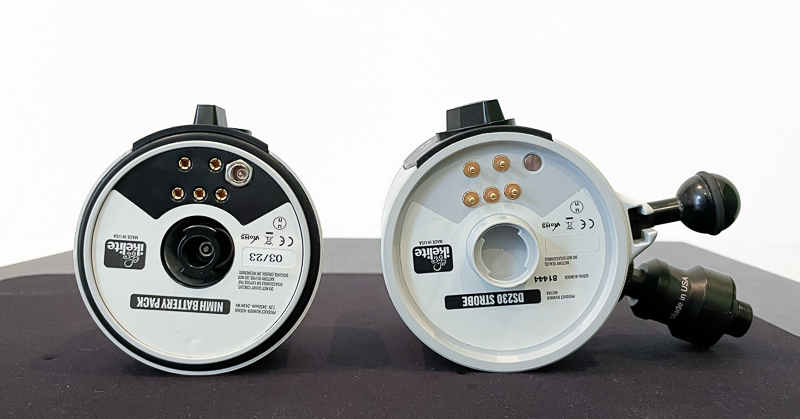
If you’re using fibre optics like I am, the only other thing I would recommend is to ensure the optical converter is still fully tightened to the electrical bulkhead, just before the dive (mind you, I’ve never found it to be loose in 5 months of use, but I like to play safe).
If you are using electrical cables though, you will have more work to do. Each time you disconnect one side of a cable, you need to lubricate the small o-ring which secures that electrical connection, after removing any hair/sand/salt). You can minimise that routine by keeping the cables in place, depending on how & where your equipment gets stored in-between dives.
Obviously, you still need to do the usual soaking and controls manipulation in freshwater after finishing diving, but that should go without saying. If you’re not too sure how to care for your underwater photography equipment, head over to our Logistics Course.
Conclusion
If you’re in a market for all-rounder strobe that is powerful enough for all sorts of wide-angle work, consider the Ikelite DS230, which is also one of the most affordable strobes in that league. By all means, it will be more than capable for fish portraits and macro work too, with the slight disadvantage of bulkiness, which comes with that kind of high-end imaging product.
The DS230 offers the wide beam and relatively warm colour temperature which are needed for the biggest wide-angle scenes or subjects, with the bonus of keeping up with short, high-speed bursts at intermediate power levels. Its controls are easy to feel by hand and to manipulate without taking your eye away from the camera, once you have spent a few dives using the DS230. I like that Ikelite now supports fibre optics connectivity via their optional converters, and I find the maintenance to be fast and easy, in the absence of o-ring lubrication (when using fibre optics).
This review covers the DS230 with built-in modelling light (aiming light) but Ikelite also have a version that embarks a 2500 lumen video light (replacing the aiming light). I haven’t tried it, but if you find yourself routinely shooting videos in between underwater stills photos, this might be the strobe to choose, for a US$200 premium vs the standard DS230.
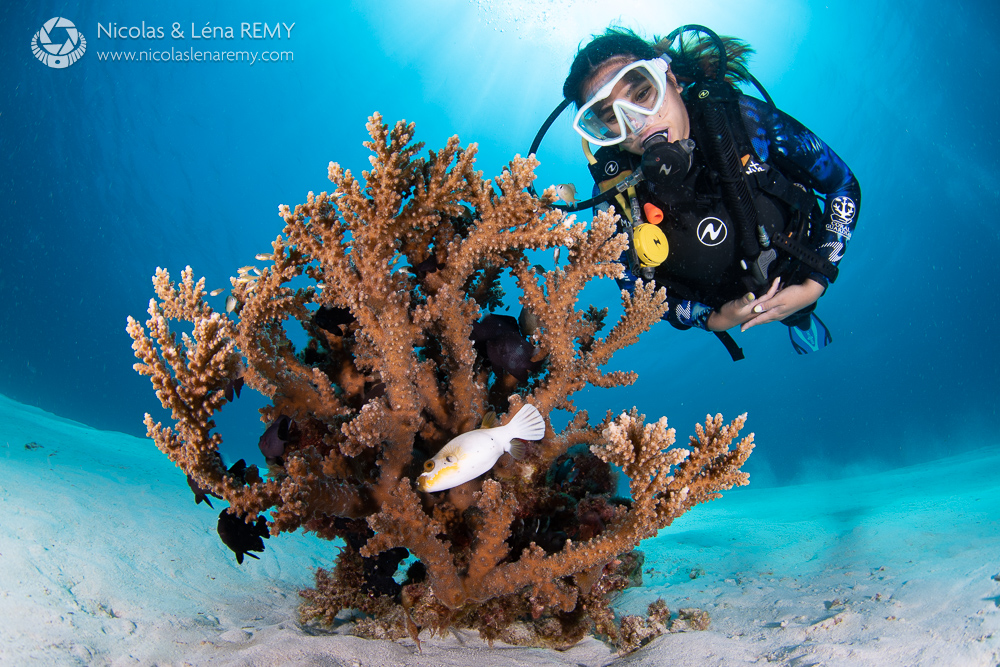
About the author
Nicolas Remy (@nicolaslenaremy) is an Australia-based pro shooter and founder of online underwater photography Club & School The Underwater Club. His images have been widely published in print and digital media, and have won over 35 international photo awards.
Nicolas would like to thank Ikelite for providing one Ikelite DS230 strobe, dome diffusers, #4405 optical converters and spare battery packs used in this review.
Affiliates links and discounts
You can support The Underwater Club’s blog articles by purchasing your equipment via some of the above links. Our partner Mozaik Cameras offers a 3% discount on all equipment, more details on our Partners page.

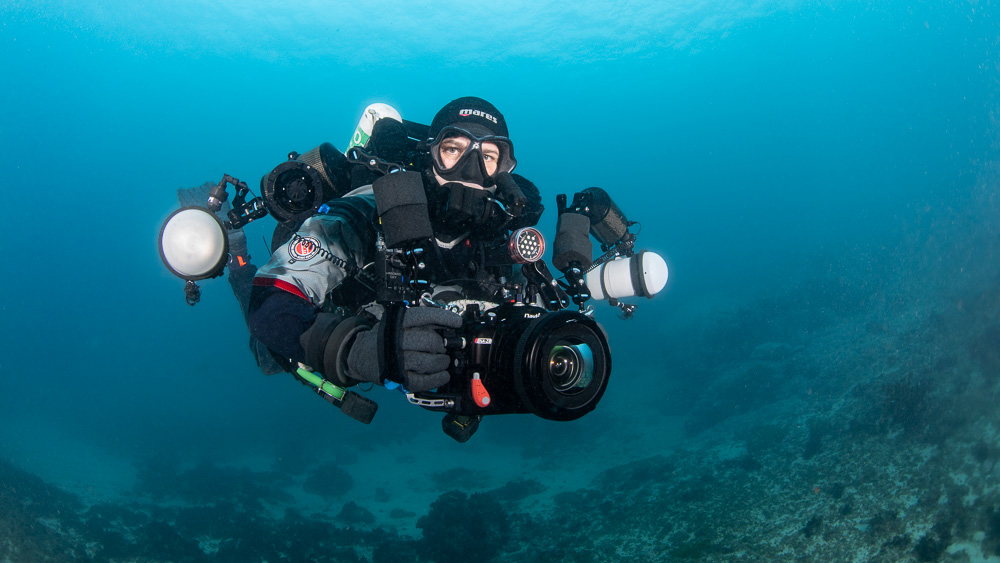
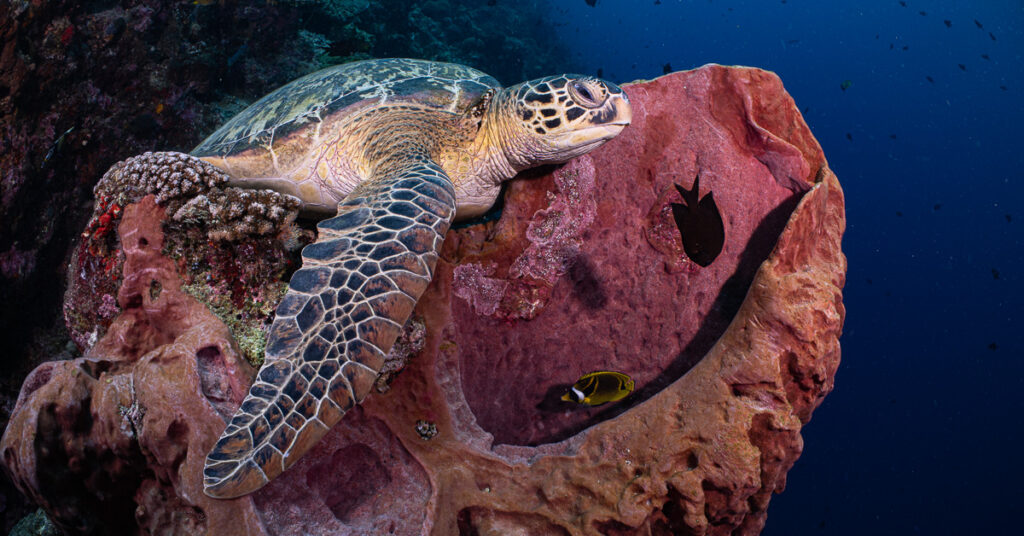

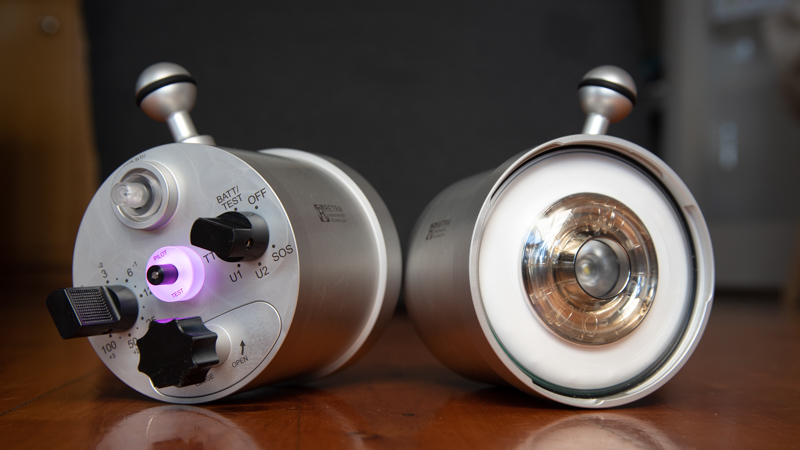
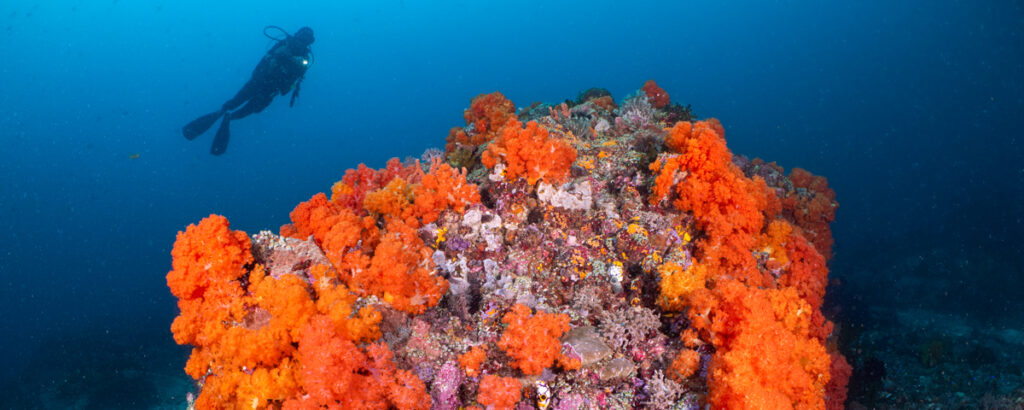
Comments